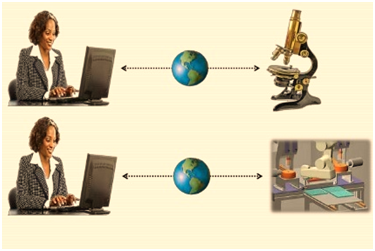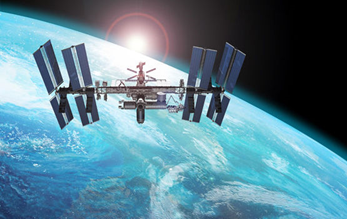ABSTRACTS 2nd SESSION

Students, artificial intelligence and the future of the work
Giulia Baccarin

We are entering the era of the predictive factory, a work environment where machines get started by themselves according to the needs and are able to self-diagnose mechanical and electrical defects. This is the industrial revolution of our time and it is based on technologies, such as artificial intelligence and machine learning, which become more and more complex and sofisticated every day.
Young people will have to be ready to adapt to tasks of greater cognitive load than in the past if they want to be able to carve out their own role in this new world of work. Above all, it will be essential for them to specialize in STEM – Science,Technology, Engineering and Mathematics.
The European Commission estimates that by 2020 there will be 900,000 jobs in such fields but no trained people to assign them to. The jobs that many of today’s teenagers are going to do tomorrow do not exist yet, and it is therefore crucial for them to design them themselves. Above all, girls will have to take a leading role in the Italian technological scene: women employed in ICT are only 15% of the total, and the number falls to 13% for roles of technical direction, research, development and production.
As an entrepreneur, a biomedical engineer and an innovator, I am at the forefront of promoting the study of STEM disciplines and the presence of women in high-tech roles.

Vega Schools: how we learn and why we founded Vega
Sandy Hooda

Why we founded Vega was to address what we believe are the world’s biggest blind spots. Before founding Vega we spent 3 years travelling around the world and researching basic beliefs about schools and education.
- Whenever we ask a large group of people if they truly enjoyed the majority of their learning experience throughout their school journey, most say no. How can learning happen unless learning is enjoyable and engaging? Yet most schools around the world continue to deliver learning in redundant ways.
- We also ask people if their schools truly helped them to find their passions, discover their interests and to align their careers with their passions and interests. One of the most important decision we make as we transition from school to university is our choice of subjects and career. How many of us make wrong decisions and continue to study courses and do the work that may leave us dissatisfied throughout our lives? Do schools help most learners make the right choices?
- The all time important question is how many people actually apply things they learnt at school in their lives? Be it values or higher order skills. As we ask CEO’s and HR managers we always get the same answers: companies interview tens of candidates before finding only a few right ones. Once hired, some of the right candidates turn out to be wrong. Employers around the world are struggling to find the right people. In our personal and professional lives, we end up making poor choices in our life (and work) partners.
- Are schools really helping develop skills to help us make the right life decisions? Are they teaching empathy and emotional intelligence skills that are critical for leading meaningful lives?
The root causes of all the above issues lie in how we learn.
Neuroscientists and progressive educators concur we learn because we ‘want’ to learn, when we are ‘interested’ in something and when learning has a ‘context’. The present classroom model by design, ensures the teacher teaches everyone everything in the same manner. However, each one of us has different learning interests, styles and speeds. Therefore the present model is deeply flawed and ensures most learners systematically lose interest in their classroom learning. Pedagogy, if implemented well, creates ‘hooks’ into learning whereby everyone could learn for a reason (a context) and to solve a real world problem. This is very similar how we learn and work in the real world. It is simple – when we learn to apply, our concepts get embedded deeper and we are more likely to remember what we have learnt. Real world learning that involves empathy and emotional intelligence creates learners capable of solving the world’s problems. Learners imbibe higher order skills that are relevant and will make them successful in the real world. It makes both learners and teachers more confident, engaged, resilient, better at researching and working with each other, and far more adept coming up with new ideas and in finding solutions to difficult problems. This style of learning will create a new workforce that will drive innovation – new ideas and business that would generate large scale employment and economic growth. And above all, it will enable happy and successful relationships.

Learning now and in the future
Olaf Hallan Graven

As we know, young people are not always eager to do or learn difficult things. It has been observed that utilising elements from a constructivist learning format seems to offer good results. One of the key points of constructivism is to get the students involved in constructing their own learning experience and through this, giving the tutor the role of facilitator and supporter for learning. Experience has shown us that most students will, after some initial misgivings, elect to follow the active learning route and actively be involved in the learning process. In addition to the known pedagogical benefits of constructivist approaches, the rationale for this is that it is simply more enjoyable.
Keeping the students active and engaged is possibly the most important part of learning. Offering the students, the opportunity to explore a new environment is giving them the potential to use one of the most potent inbuilt feelings in humans, curiosity. With the power of hindsight most people will say that making mistakes is what they learned the most from. A popular phrase being:” People should be allowed to make their own mistakes”. One challenge for us as educators is allowing our students to make these mistakes in a safe environment.
These efforts to keep students active takes many forms: Laboratory exercises: Onsite, remote/online laboratories, pocket laboratories in various forms all of which gives the students the opportunity to “get their hands dirty”, though not always physically. Elements from computer games, are also utilised in the learning setup. Real assignments from national and local industry are also utilised.
All of these efforts are focused on keeping the learners active, creating a story to contain the learning material, using the concept of hard fun or creating a state of flow, and finally creating opportunities for socialisation during the learning.
Elements like the once mentioned above and others are among the techniques, tricks and methods that we need to work into our future education.

How can teachers move from traditional to innovative learning environments?
Alastair Blyth

The spatial design of learning environments is evolving in response to profound changes in learning and teaching. Single-subject teacher-centred pedagogies and learning spaces, which describes much of contemporary education, are no longer sufficient to meet the diverse needs of societies and individuals. How is the design of education space changing? How will the design of learning environments develop in future?
Healthy societies demand that people are better educated and socially inclusive. The development of computing and automation means that many types of manual and routine clerical jobs are fast disappearing. Employers expect their employees to be equipped with a broader set of skills than those merely relevant to specific job types. Skills such as problem-solving, collaboration, creativity and innovation as well as interpersonal skills such as empathy have become key.
Education systems are expected to help students develop ways of thinking, ways of working and ways of living together. Students are no longer being seen, or see themselves, as being passive recipients of knowledge, but active participants in learning, each learning in their own unique way.
Technology is enabling learning to happen in different ways in and beyond formal learning settings at any time through both access to information and enabling different forms of collaboration.
The role of the learning environment is changing from being predominantly teaching-centred to being learning-centred. An environment that goes beyond school buildings to include all those places where learning happens. School buildings themselves are no longer being seen as static boxes merely containing education but as dynamic environments integrating both internal and exterior space able to facilitate different learning modes and styles. There is a focus on the experiential and the impact of the environment on health and well-being of its occupants as it touches all of the human senses. This recognition is itself not new, but is perhaps more widely recognised as being important in the design of the learning environment.
Spatially this is being translated into learning environments with a greater variety of spaces both inside and outside, more connectivity (spatially and technologically), a greater sense of openness and opportunity to reconfigure the environment to specific needs.

Zero Robotics: the future is in the space
Iris Vogna – Matteo D’Elia

Would you like to experience the thrill of bringing something of yourself into the international space station? Do you want to be a lead of the technological future and of the new space frontiers? Then prepare a tight-knit group of students with the desire to overcome a difficult challenge, to study mathematics, computer science and physics, to cooperate with students from all over the world and work hard every day and often nights for at least 3 months, speaking of course in English.
This is Zero Robotics, a robotic competition organized by MIT in Boston together with NASA and ESA. Students from all over the world are asked to programme mini satellites on the space station. The challenge is a kind of videogame, the main characters are students who are part of a crew that leads a mini satellite in the space with zero gravity. In a few minutes they have to defeat a hostile satellite using intuition, logic and the latest technological tools available.
The astronauts on the ISS will make all this possible, that is, catapult students into space and let them experience a unique and unforgettable experience.
Marco Goia, the mentor of the team, who has been organizing the activities of Zero Robotics since 2012, Matteo D’Elia, a secondary high school student who has been team leader and head programmer since 2015, and Iris Vogna, a secondary high school student, who has been participating as Strategist & Mathematician since 2016, will illustrate the project: how it has been implemented and managed, what the goals are what is the recipe for success.
The presentation will give the point of view both of students’ and teachers.
<Back to 1st session abstracts
<Back to ADi Annual Meeting



